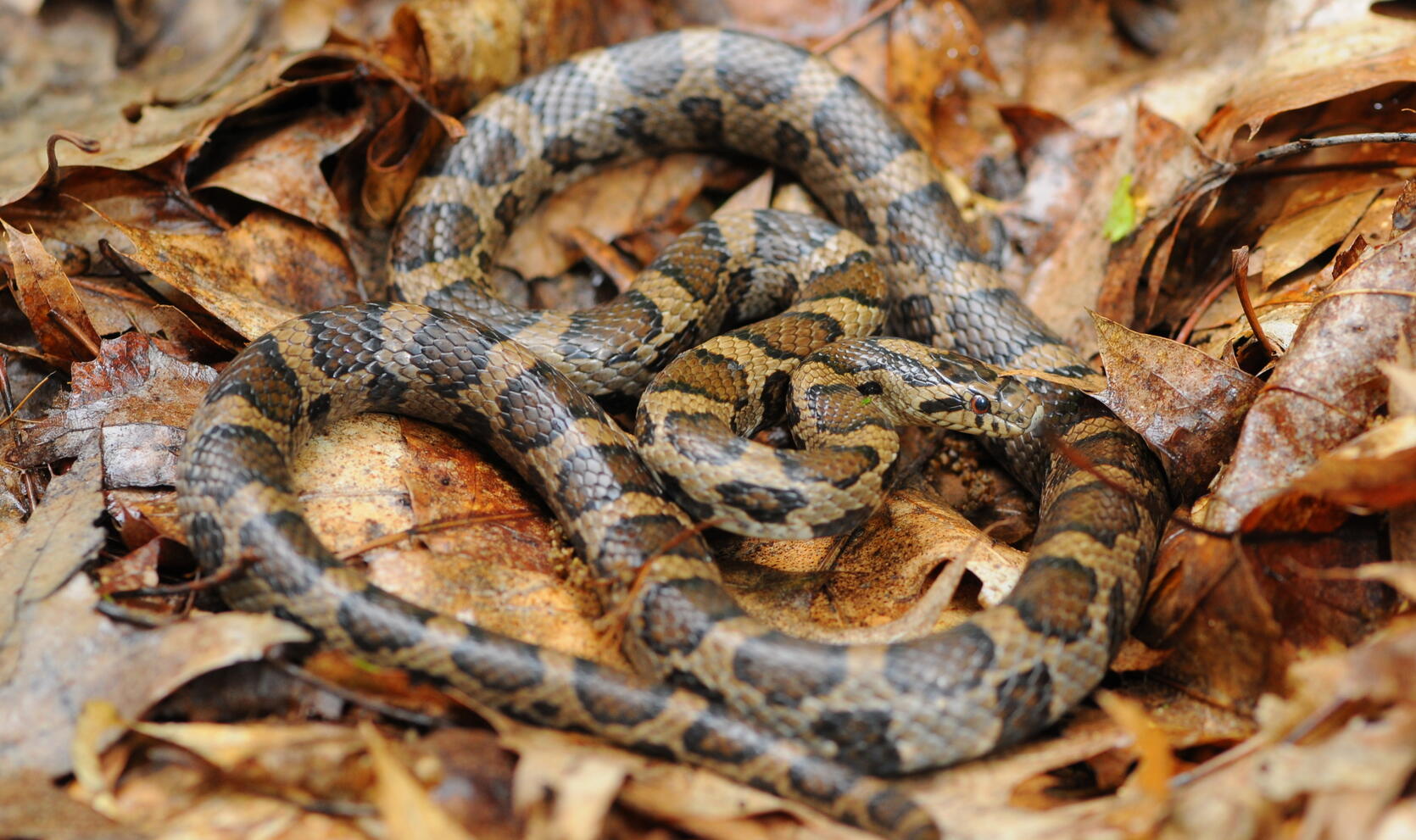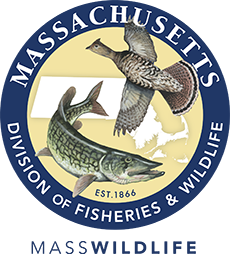- Division of Fisheries and Wildlife
Media Contact
Media Contact, MassWildlife

Snakes become less active as temperatures drop because they are cold-blooded. In fall, you may observe more snakes, as they search more actively for food sources such as mice, frogs, toads, and insects.
When they can no longer maintain adequate body temperature by basking, snakes become dormant and wait for warmer weather to return. Among reptiles, this dormant period is called brumation. Snakes seek winter shelters in “hibernacula” such as rocky debris, mammal burrows, holes, tree stumps, rocks, or logs. Multiple species of snake may use the same hibernaculum.
Shorter winters can lead to shorter periods of dormancy. On warmer days, snakes may exit the “den” to sun themselves to raise their body temperatures. They may also emerge briefly to seek out water.
Which snake species live in Massachusetts?
Massachusetts is home to 14 native snake species. Common (and nonvenomous) snake species of the Commonwealth include gartersnakes, milksnakes, and northern watersnakes. All snakes tend to avoid predators, including people, unless they are cornered or otherwise threatened.
Only two Bay State snake species are venomous: timber rattlesnakes and copperheads. Both are state-listed as endangered, and both live in very few areas of the state. Three non-venomous species are also state-listed: eastern ratsnakes (endangered), eastern wormsnakes (threatened), and eastern hog-nosed snakes (special concern).
By learning to identify our more common snake species, you can deepen your appreciation for nature, give yourself more peace of mind, avoid confusing common species with rarer ones, and support snake populations of all stripes.
Learn more about the snakes of Massachusetts.
How can people help snakes in Massachusetts?
If you see a snake that is listed as threatened, endangered, or of special concern in MA, we'd like to hear from you! Please share your observation on the MassWildlife Heritage Hub. Sharing requires creating an account, but you will receive confirmation and thanks from our biologists, once your observation has been reviewed and confirmed. Your reports provide critical information that informs future habitat management and wildlife conservation for future generations. For a single sighting, as an alternative to setting up a Heritage Hub account, you can also use our Rare Animal Observation Form.
If you see a snake that is not “listed” you can still help by sharing your observations on our Massachusetts Reptile Survey, hosted on iNaturalist.
To support conservation efforts across more than 400 populations of plant and animal species protected under the Massachusetts Endangered Species Act, you can donate to MassWildlife’s Natural Heritage and Endangered Species Program.
